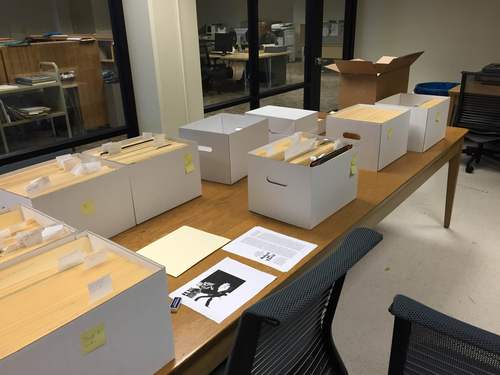Well, my time here as a CCEPS Fellow is nearing its end. Last week all three of us CCEPS Fellows had the pleasure of giving a presentation on what we have been doing the past semester. Giving a presentation is a fantastic way to punctuate our time at CCEPS. It allowed us to give our own insight into the work we have been doing behind the “glass wall” and what it has meant to us individually.
Winding Down
This is the final week for the Spring CCEPS program, and it’s been a great experience. The IAC records presented challenges, but I feel like I’ve learned a lot from working on it. The archiving classes I took during and prior to starting here taught me about the challenges that can come up, and the different approaches you have to take to different kinds of materials. It’s almost never going to be all neat 8 1/2 x 11 pages. Processing this collection let me gain experience working with oversize and difficult items, cassette tapes, learn how to sleeve photos, film, and slides. Archiving is very hands-on, and it was great to put all the theory into practice.
So it’s time to say goodbye and move on to the next thing – I’m heading to Haines Alaska this summer to start an archives internship at the Sheldon Museum! I’m excited to continue working with archives, and I’m so grateful to have had the opportunity to work here with Lisa and the Special Collections crew this semester. It’s been a fantastic learning experience and I can’t wait to keep honing my skills. Thanks to all who’ve been following the blog and make sure to keep an eye on it for the next group of CCEPS students!
– Sara
Encapsulation
Lisa showed us how to encase a photograph in mylar this week – the satellite photo I wrote about a few weeks ago:

The operation was successful. There are a huge number of photographs in the collection so we’re not going to have time to do that this semester, but we got to learn how to encapsulate a photo that doesn’t fit into any of the standard mylar sheets.
Other than that I’ve just been labeling the folders, adding last things to archivist’s toolkit and working on the finding aid.
Also, if you find yourselves in Claremont on Friday the 8th at 2:30, myself and the other two CCEPS students will be giving presentations on our work this semester. It will run until about 4pm, come check it out!
Later –
Sara
Nearly there
Well last week all the maps got nestled into their giant folders, now all that’s left is entering a bit more information into Archivists Toolkit and some labeling. I’ve been working on excel sheets for the audio records and maps, but that’s not very interesting so here are some photos.
These are selected from the second series’ photo records of the 1975 Nag Hammadi dig:

Doesn’t seem like the easiest terrain to deal with – there are photos of caves they were exploring in the rock face but it looks like they were searching in the rocky area around the base too:
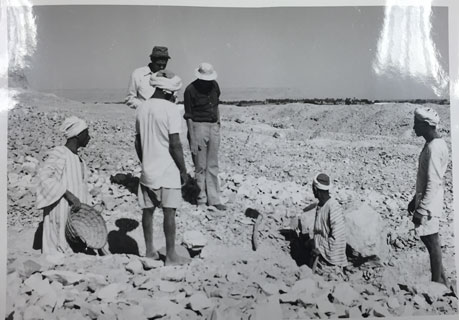
A meal break – that’s Jim Robinson in the center:

Here’s one of the things they uncovered, I’d guess you’d really need to know what to look for. The hieroglyphs are barely visible to me:

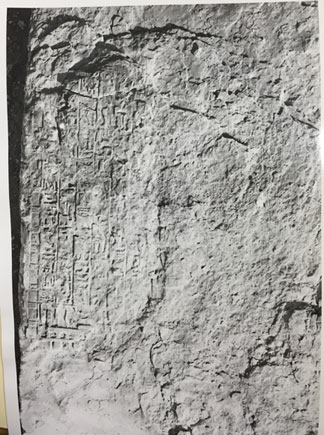
That’s all for this week, until next time!
Sara
Now that’s thorough
Nothing new to report on right now with processing, so here’s something I found interesting while we were going through the maps and photos. One of the tubes that came with the collection was mailed from the Department on the Interior and contained a satellite image and its negative of the Nag Hammadi area.


If you can, why not get the best overview of your dig site as possible? From what I’ve made out of the numbers on the photo, it seems this was taken on the 21st of November 1981:
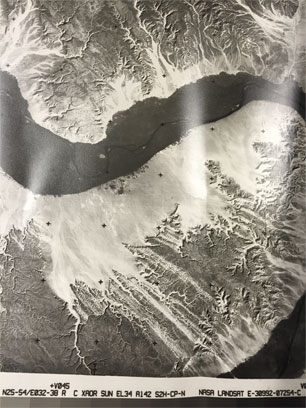
If that’s the case, this was taken near the end of the expeditions, maybe they were made because the option had just become available. A cursory look at satellite history says that there have been photo satellites from as early as 1946 (http://www.airspacemag.com/space/the-first-photo-from-space-13721411/?no-ist=), but the ability to order a photo survey from NASA may have been some time coming.
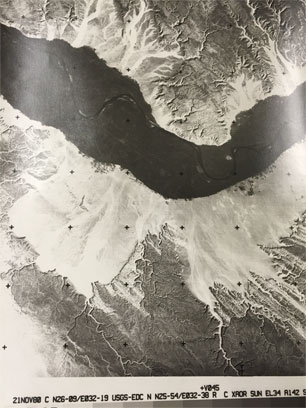
The weeks are counting down quickly now, just going to keep pressing on. Look forward to another piece of show and tell next week! Until then –
Sara
DSS in the IAC

Now that the bulk of the processing is done we’re just focusing on the loose ends and the little pieces that haven’t fit in anywhere else yet. There are a couple reels of super 8 film and an interesting notebook with images from an exhibition of the Dead Sea Scrolls. It’s put together in a way I haven’t seen before – the photos are in sleeves that are hinged so you can flip each one up.


They correspond to some of the index cards that came with the collection. There isn’t a huge amount of information on the Dead Sea Scrolls in the records, but there are some lectures, images, and info on the exhibition of the scrolls scattered throughout. The codices are much more well represented in this collection.
As for me, I’ll keep working on the data entry portion of the processing and getting these last few things all buttoned up. Until next week!
Sara
It’s Been a While
Hello to all! First, I must apologize for my absence on this blog as our spring break was last week and it would have been unfair of me to create a post without any substance. This post will take a different tone than in my previous posts. This entry will be centered about the technical and organizational aspect of being an archivist, an often looked over area of the archiving world.
Audiophiles
The boxes for the cassettes and the index cards came in this week, so we got to work moving them in. These are mostly recordings of the regular public lectures hosted by the IAC over the years. A few of the tapes are from the Nag Hammadi expedition and seem to be of interviews with the people who discovered the codices.
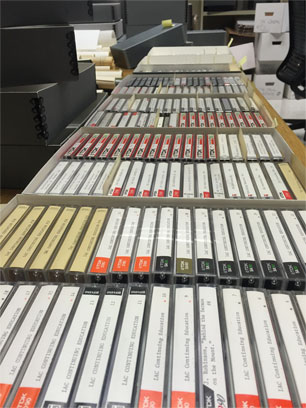
Miraculously only one of these had an empty spider egg sac in it. It was a considerate spider though, it chose one of the blank tapes.
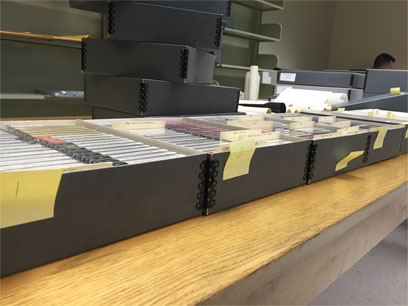
Still working through these too:
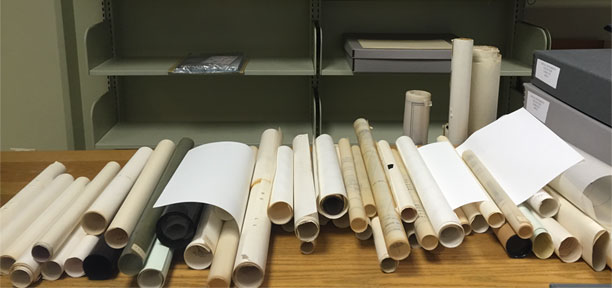
They’re fun to look at; it’s interesting to see all the different information that the archaeologists needed to conduct the their digs successfully. What the ground consisted of seems to be particularly important, which makes sense. They charted the types of stone and ancient building work and where they were in the site:
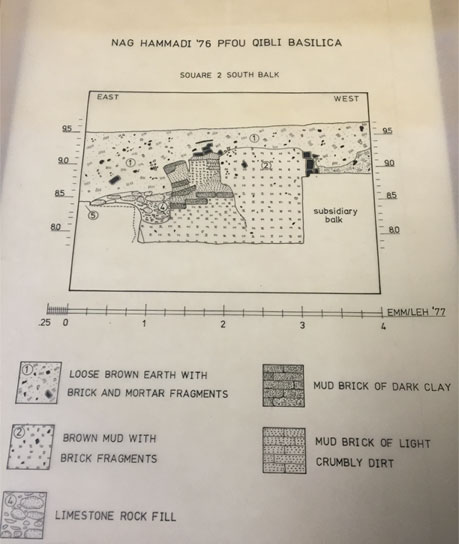
Wouldn’t want to lose anything! That’s why you went there in the first place. Next step is getting all the information put into Archivist’s toolkit – series one and a chunk of series two are in there now but the cassettes are going to have to be described on the item level. Until next week!
– Sara
Continuance
Well it’s suddenly the week of spring break, hard to believe the semester is already half over! The end is in sight and the proof is in those tidy boxes. This week I finished up the photos / slides and also started digging deeper into the maps. These are the most substantial thing remaining to be done, but luckily the mapmakers had an order system. Can’t take chances I suppose when you’re trying to keep track of a dig, seems like it’d be pretty important to know where things are. Unfortunately, some of these are so massive that we’re going to have to keep them rolled up. It’s always best to avoid leaving them that way but any folder big enough for these could also double as a queen-sized bed cover. Some of the maps look like they’ve been through the mill a bit, like the dirt-covered field notes, and must have seen a lot of use. It would be interesting to find out just how each kind was used in the course of the dig. We’re still working on entering all the folder names into archivists toolkit as well, and getting some research done for the front material of the eventual finding aid. It’s definitely shaping up!
Until next week –
Sara
Coinage
The first series is complete! Everything has been sorted, refoldered, and put into new boxes so now we can work on getting them entered into the database. We’ve just got the rough edges of series two to smooth out – slides, a few photos, last week’s maps and the audio tapes. While we were sorting through Series 1’s photos I wrote about some interesting coins held by the IAC – now I’ve got some photos to share. Here are a few of my favorites from the collection:
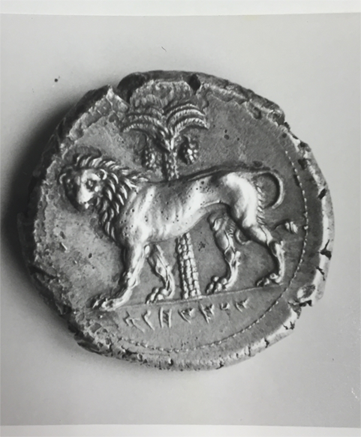
There is no size reference for the coins, and they are in black and white, but the amount of detail on these animals and people is impressive. I want to look into how these were created, and what materials they’re made of. I’m not even completely sure these are monetary coins.
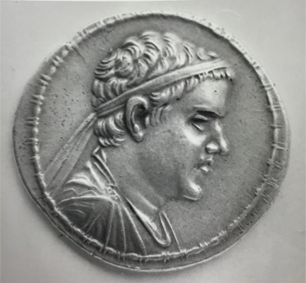
This fellow doesn’t look like he wants to be on a coin, and has lost his eyes.
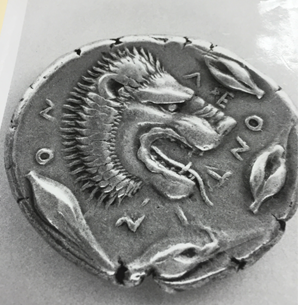
Lion surrounded by/excited about eating conches(lilies?)
It’s great to see the collection coming together! Soon enough the finding aid will be done too. There’s still work to be done but it’s moving along really well. Until next week!
– Sara
